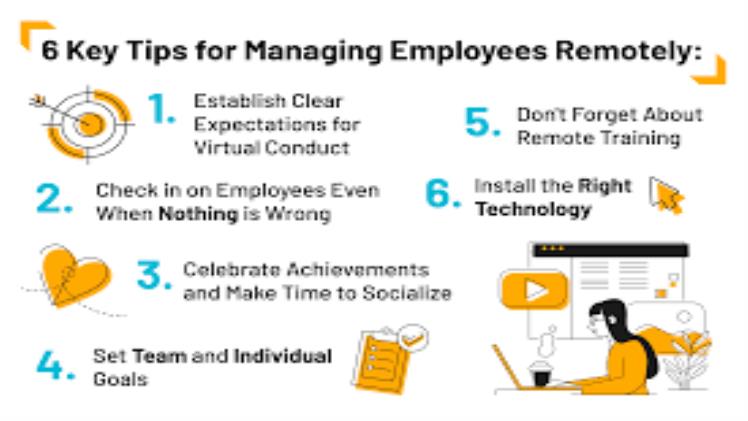Best Practices for Managing a Remote Team

Management a Remote Team can be an intimidating challenge for managers. Whether this is your first time managing one, or you’ve been doing so for years, there are some essential best practices to remember when bringing together a group of teleworkers.
Make Sure Your Employees Have the Knowledge They Need to Succeed
Involve your employees in creating an employee handbook that clearly defines goals, roles, and expectations. Doing this will enable your staff to succeed without micromanaging them and also make it simpler for them to identify when an issue needs addressing.
Establish a Working Schedule
Remote workers often need to work outside regular business hours due to being away from the office. Therefore, it’s essential to create an organized working schedule with designated times when everyone can be online for communication and collaboration on projects. Utilizing software that tracks tasks and deadlines on a project management calendar gives your teleworkers a comprehensive view of what needs to be accomplished each day.
Offering Different Communication Channels
It’s essential to offer your team various communication channels so they can pick the one which works best for them. This could include email, organizational chat platforms like Slack, and even last-minute phone calls or texts when issues arise.
Recognize Your Employees for Their Outstanding Contributions
It can be easy for remote workers to feel unappreciated when working alone. Therefore, team leaders must make it a priority to recognize teleworkers whenever possible – no matter how small the gesture may seem. Doing this will improve morale, boost productivity levels, and have an overall beneficial effect on your company’s success.
Engaging in One-on-Ones
It is essential to regularly check in with your teleworkers to gauge how they’re feeling and identify what may be keeping them up at night. Doing this helps you prevent any future issues and guarantees your team feels comfortable working together in a virtual setting.
Foster Social Connections
Building social connections among your remote team may seem counterintuitive, but it can actually be beneficial to their productivity and wellbeing. By organizing video hangouts and other events, you can foster relationships between team members even when they’re not physically together.
Create a Workplace That Is Devoted to Work
Teleworking can be challenging and overwhelming at first, especially for women who may be more sensitive to workplace stress than men. Therefore, managers must set up an area dedicated solely to work so their team has some structure and can be productive without worry of being distracted by home life. Establishing this kind of workspace gives everyone involved in telecommuting an incentive and allows them to focus on work without feeling overwhelmed by home life obligations.
Consider Providing a Dedicated Office Location
Remote workers who must travel to the office for meetings can benefit from having a dedicated workspace that helps them be more productive and reduce distractions from home life. This could include teleconference rooms or another physical office space where the team can gather in person.
